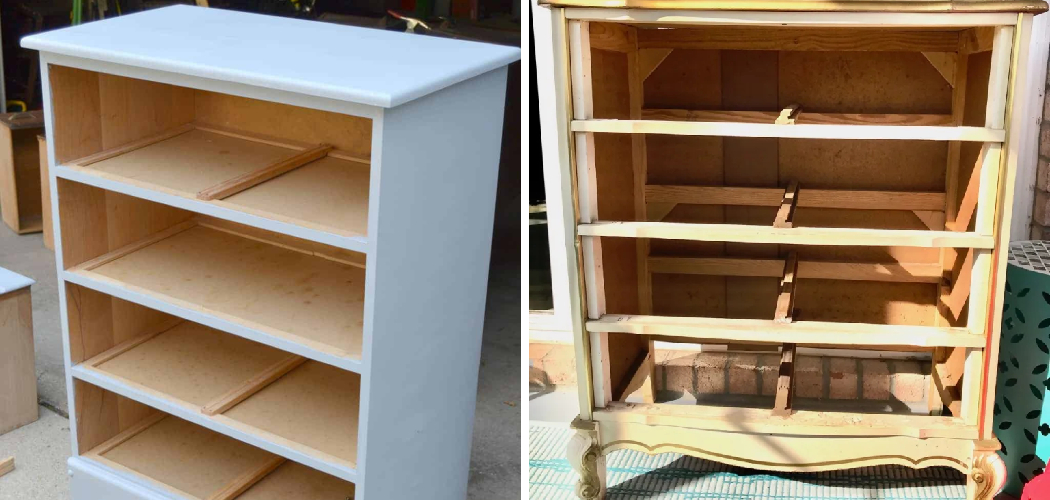Transform your dresser into the ultimate storage solution with a few easy steps: turn it into a bookshelf! Whether you’re tight on space or just want to get creative with furniture upcycling, this project is sure to add interest and functionality to any room in your home.
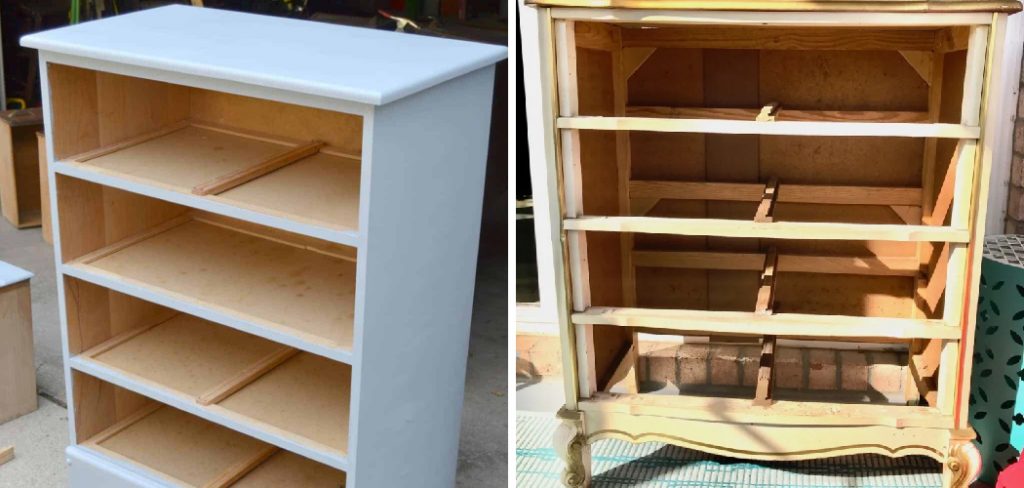
With some basic supplies, like sandpaper and glue, you can customize your own bookshelf within an afternoon. In this blog post, we’ll show you step-by-step how to turn dresser into bookshelf that’s both practical and unique – perfect for all your favorite reads!
Step-by-step Guidelines on How to Turn Dresser Into Bookshelf
Step 1: Prepare the Dresser.
Start by cleaning the entire piece with a damp cloth to remove any dust or debris. Take off all knobs and drawer pulls, then use sandpaper to smooth out any rough spots. If you’re dealing with an old dresser, you may want to apply a coat of primer and paint before moving on. But, if you’re looking for a more rustic aesthetic, skip this step and move on to the next. Remember to wear gloves when sanding.
Step 2: Measure & Cut Shelf Boards.
Using a tape measure, decide how wide and long you want the shelves to be. Cut two boards for each shelf that are slightly longer and wider than your measurements so there’s room for the support rails.
It’s important to use a drill and screws when attaching the boards together so they remain sturdy. If you’re adding more than one shelf, make sure to measure the space between each board so they all fit perfectly.
Step 3: Measure & Cut Support Rails.
Measure each side of the dresser from top to bottom, then cut four pieces of wood to use as support rails. Make sure they’re long enough to fit across all four sides of the dresser and provide ample support for your shelves.
That’s why it’s important to measure twice and cut once! It’s also a good idea to screw in the support rails after you’ve put them together, as this will help ensure that everything stays in place.
Step 4: Attach Shelf Boards & Support Rails.
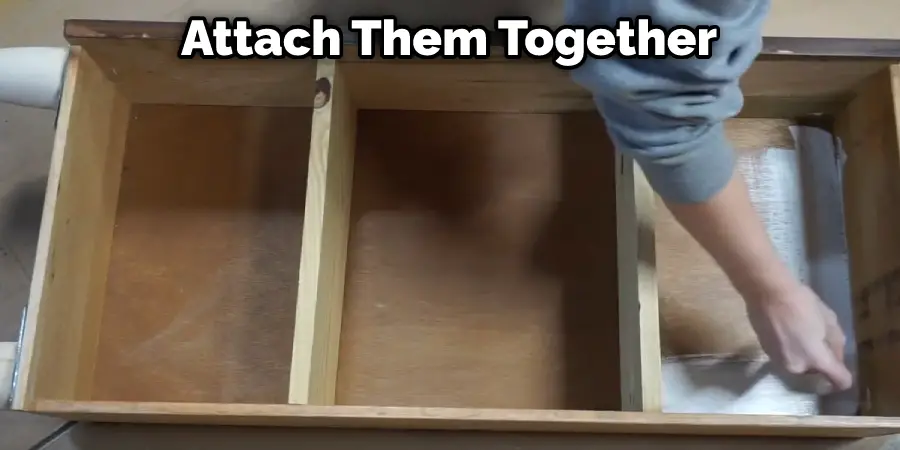
Once you have all your pieces cut, attach them together using wood glue or screws. Use clamps if needed, making sure everything is held tight and straight while it dries. If you’re using glue, make sure it’s fully dried before moving on to the next step. But if you’re using screws, make sure to plug any holes with wood filler. This will provide a smooth finish.
Step 5: Seal and Stain the Wood.
Once all the pieces are securely attached, seal the entire bookshelf with a protective layer of polyurethane or other sealants. Then stain the wood to your desired color and let dry completely before continuing.
This will help protect the wood from everyday wear and tear. Make sure to use a brush or cloth to apply the stain evenly. If it’s too thick, use a damp cloth to wipe off any excess. But if it’s too light, you can always add more coats of stain.
Step 6: Add Backing & Wall Brackets.
Cut a piece of thin plywood or hardboard to fit behind the shelves for additional support. Secure it in place with screws, then attach wall brackets at each end of the top shelf for extra stability when loaded with books.
This will help to keep the bookshelf from tipping over. But, if you’re not attaching it to the wall, make sure that the bookshelf is securely balanced on a flat surface. That way, you don’t have to worry about it tipping over.
Step 7: Attach Wall Anchors.
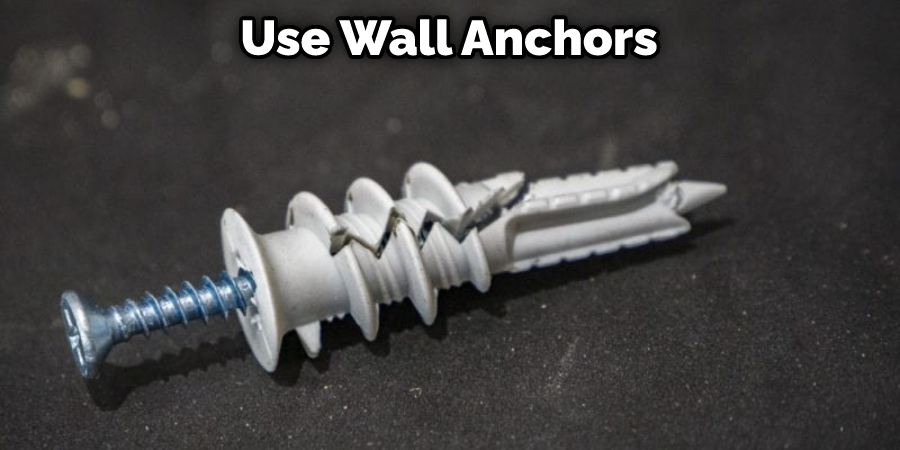
For added security, use wall anchors to secure your bookshelf in place on either side of the wall. Screw them into place with a power drill, then cover any visible screws with decorative caps or knobs.
It’s also a good idea to add some picture wire on the back of each shelf as an extra security measure. But make sure to measure the length of the wire first so it doesn’t show through on the outside. You can also attach decorative molding along the edges to add a finished look. It’s an easy way to make your bookshelf look more custom and tailored.
Step 8: Add Shelf Supports (Optional).
If desired, you can add shelf supports to each shelf to provide additional support and keep your books from sliding off. Make sure they’re long enough to fit between each board before attaching them.
But, if you’re not adding shelf supports, make sure to evenly distribute the weight of your books across each shelf. Other than that, your dresser-turned-bookshelf is now complete! But, if you want it to look even more attractive, consider adding a few decorative accents like baskets or boxes. That way, it’s both functional and stylish.
Step 9: Place Shelves On Dresser & Enjoy!
Finally, place all the shelves on the dresser and fill it up with books! To make sure everything is secure, check that all screws are tightened and wall anchors are firmly in place before loading on your favorite titles.
It’s also a good idea to take extra precautions and add some felt pads or rubber feet on the bottom of the dresser. That way, you don’t scratch or damage your floor. Now, sit back and enjoy your new dresser-turned-bookshelf! Your DIY project is now complete!
Step 10: Reattach Knobs & Drawer Pulls (Optional).
If desired, you can reassemble the knobs and drawer pulls that were taken off earlier. Not only will this add a decorative touch, but it can also make the bookshelf easier to open and close.
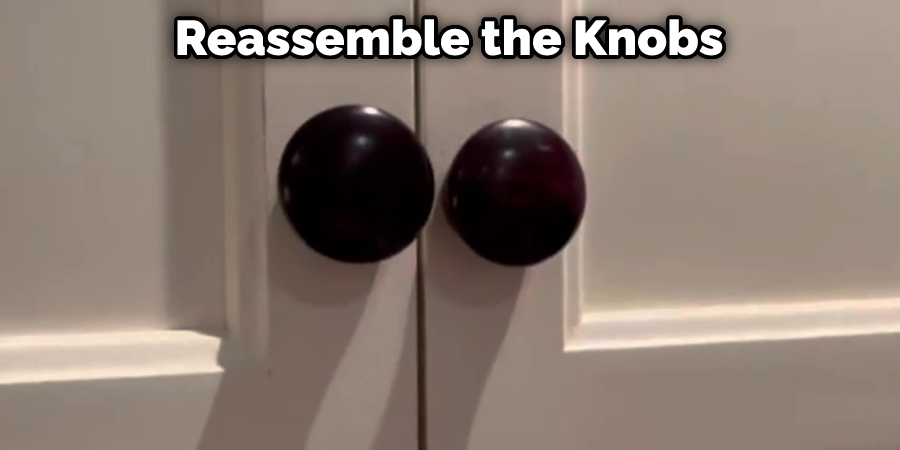
If you don’t want to put the knobs back on, you can always add some decorative handles instead. But, in any case, make sure that the screws are tightly secured and do not protrude too much from the shelf. Remember, safety first!
So, make sure that your dresser-turned-bookshelf is safe and secure before using it. And there you have it – your very own bookshelf made from a dresser! With just a few simple steps, you can transform an old piece of furniture into something unique and functional for any room in your home. Enjoy! We hope this blog post has shown you how to turn dresser into bookshelf with ease.
Why Should You Turn the Dresser Into a Bookshelf?
There are several reasons why you should consider turning an old dresser into a bookshelf. Firstly, it’s cost-effective and economical. You don’t have to purchase a new piece of furniture, which can be expensive.
And secondly, it’s creative and fun. Not only will you get to show off your DIY skills, but you’ll also be able to customize the design to suit your tastes.
Plus, it’s a great way to repurpose something that might otherwise be discarded or given away. So why not give it a go? With just a few simple steps, you can easily transform an old dresser into a stylish and functional bookshelf.
Do You Need to Use Professionals?
No, you don’t need to use professionals when turning a dresser into a bookshelf. It’s a straightforward DIY project that doesn’t require special skills or tools. However, it’s important to remember to take safety precautions and check that all screws are securely tightened before using the bookshelf.
If you’re not confident in your DIY abilities, or if you don’t have the right tools, it could be worth hiring an experienced handyman or carpenter to help you out.
How Much Will It Cost?
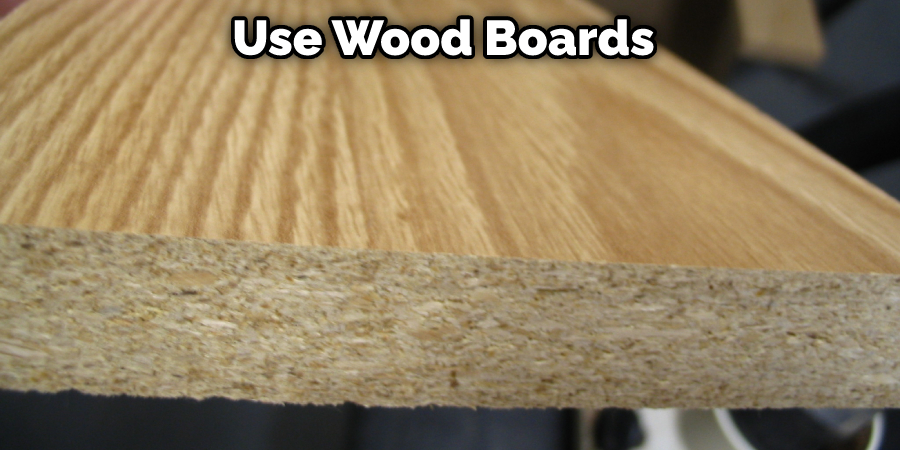
The cost of turning a dresser into a bookshelf will depend on the size of the dresser and the materials you need to purchase. The most inexpensive option would be to use wood boards or recycled shelves, which can usually be found at a local hardware store.
You may also have to buy screws, wall anchors, and shelf supports. In general, the cost should be relatively low – usually less than $50 in total.
Good luck with your DIY dresser-turned-bookshelf project! We hope this blog post has given you all the information you need to get started.
Frequently Asked Questions
Q: Can I Use Recycled Materials to Make a Bookshelf Out of a Dresser?
A: Yes, you can use recycled materials such as wood boards or shelves to make a bookshelf out of a dresser. However, it’s important to check that the material is sturdy and suitable for supporting heavy items like books.
Q: How Do I Make Sure My Bookshelf Is Safe To Use?
A: Before using your bookshelf, make sure that all screws are securely tightened and the shelves are properly supported. You should also check for any loose parts or sharp edges that could pose a safety hazard.
Q: Can I Paint My Bookshelf?
A: Yes, you can paint your bookshelf if you want to add a decorative touch. Just make sure that you use paint that is suitable for the type of material and follow all safety instructions. Make sure to wait for the paint to dry completely before using the bookshelf.
Q: Can I Put Heavy Books On My Bookshelf?
A: Yes, you can put heavy books on your bookshelf. However, it’s important to make sure that the shelves are properly supported and the screws are tightly secured before adding any items. This will help ensure that your bookshelf is safe and secure.
Q: Is It Possible To Add Shelves To My Bookshelf?
A: Yes, it’s possible to add shelves to your bookshelf. You can either purchase additional shelves or use wood boards to create custom shelves. Just make sure that they are securely fastened and properly supported before adding any items.
Conclusion
Turning a dresser into a bookshelf is an easy and cost-effective way to add personalization to any room. With just some basic supplies and a little bit of creativity, you can upcycle an old dresser into something that’s both practical and stylish.
By following the steps about how to turn dresser into bookshelf outlined in this blog post, you’ll have your own custom bookshelf in no time. So what are you waiting for? Get to work on transforming that dresser into something beautiful!

